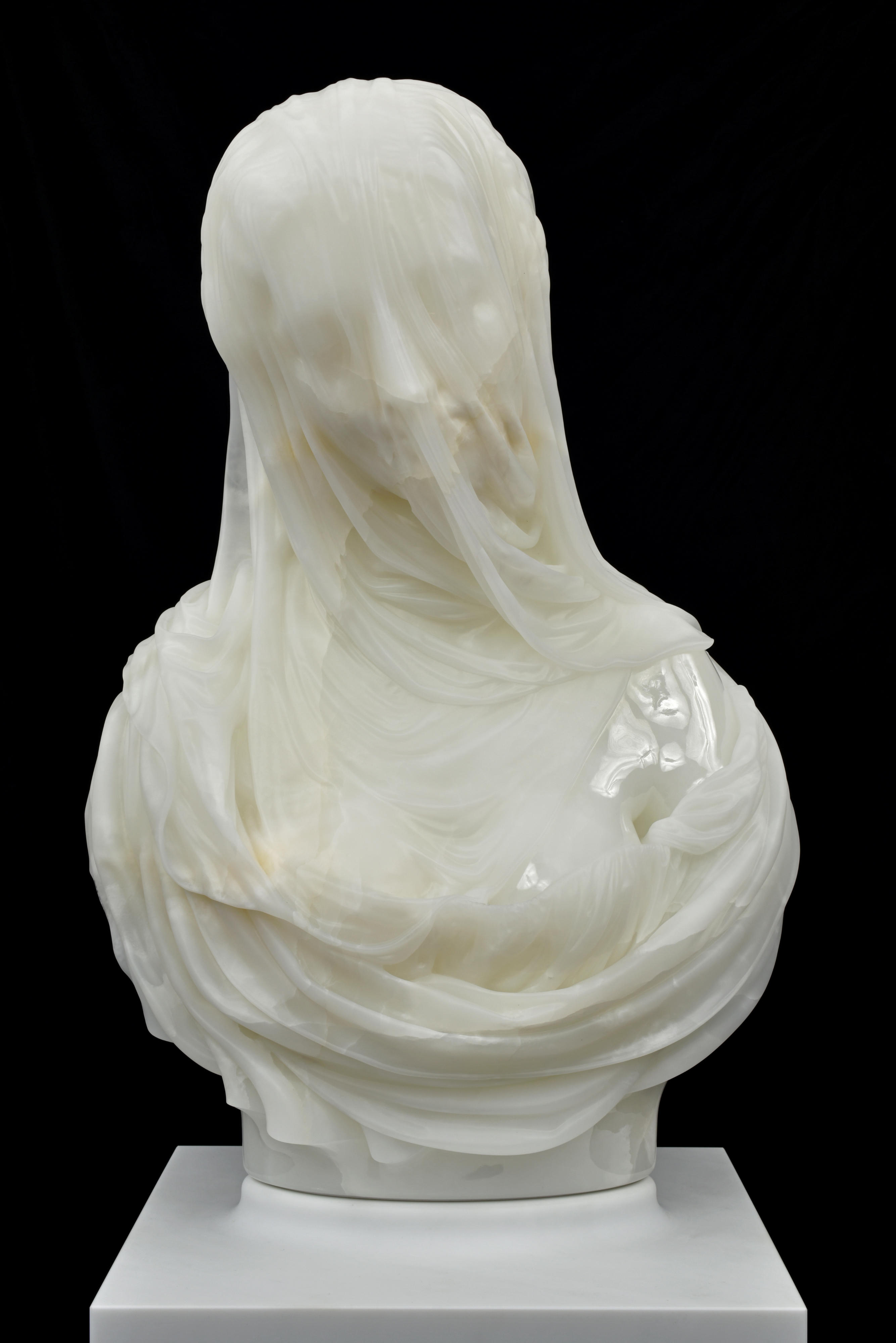Barry X Ball
Purity, after Antonio Corradini (1668–1752), La Purità, 1720–25 Ca' Rezzonico, Venice
2008–21
Sculpture: translucent white Iranian onyx, stainless steel
Pedestal: Carrara marble, stainless steel, wood, acrylic lacquer, steel, nylon, plastic
Overall: 174.7 x 42.2 x 30.5 cm (68 3/4 x 16 5/8 x 12 in.)
Sculpture: 60.6 x 42.2 x 26.8 cm (23 7/8 x 16 5/8 x 10 5/8 in.)
Pedestal: 114.1 x 35.6 x 30.5 cm (44 7/8 x 14 x 12 in.)
Provenance
Description
‘There is a long history of artists making working in that ancient tradition. Fueled by love, I'm reaching way back to a time centuries before the Modernist Revolution, searching for a way to make something equally revolutionary.’—Barry X Ball
Barry X Ball was born in Pasadena, California, in 1955. As a college student, his travels to Europe exposed him to the works of the Old Masters who inspire many of the works he creates today. Ball reinvents works of the Renaissance. Using modern technological methods, he unites the art historical with the present day, revitalising masterpieces of the past.
Purity, after Antonio Corradini (1668–1752), La Purità, 1720 – 1725 Ca' Rezzonico, Venice, 2008–2021, is inspired by the titular Antonio Corradini. The present work, a mirror image of its predecessor, opens the art historical to the possibilities of modern innovation. Ball’s process often begins with a three-dimensional scan of the work, which is then used in conjunction with computer-aided modeling software to alter the scan as Ball sees fit. Milling machinery is then used to sculpt the stone. However, his process is not entirely reliant upon technology, as the sculptures often require detailed and meticulous work and refinement by hand.
Straying from the traditional medium of white marble, the sculpture uses semi-transparent stones atypical of what would have been used in Baroque Italian sculpture, invigorating the figure with an element of sumptuous softness. The cloth appears delicate, almost seeming that the slightest breeze would cause the folds to move – at odds with its rigid medium. In contrast to the seemingly sheer stone of the drapery, the figure’s exposed shoulder is lustrous, distinguishing flesh from cloth. This reimagined personification of Purity is ethereal, juxtaposed between resounding stillness and an elegant dynamism.
Ball places the past and the present in dialogue with one another, creating new works while calling upon the age-old tradition of sculpture. Referencing the Baroque tradition, he elucidates the thread which weaves through time and ties us to hundreds of years of art history.




